2013 • 3 • 17
Much has been said about Bangkok being so touristy. But that’s a given. As the world’s most visited city, Bangkok is such a crowd-drawer that it is almost impossible to find a tourist-less frame whenever you try to take a photo of anything. Bangkok’s map is dotted with several tourist spots that most people flock to. Spend at least one day exploring the sites punctuating the Chao Phraya River and see for yourself. Self-proclaimed traveling elites may cringe at you visiting the usual tourist spots but go anyway. There just might be a reason they are on everyone’s maps and guidebooks.
The best thing about the Grand Palace and the great temples of Bangkok is that they stand close to each other. They are also easily accessible via the Chao Phraya Express Boat, which is also connected to the BTS (Skytrain). Here’s a quick guide to help you see six of the top tourist spots along the Chao Phraya. (I’m not saying this is the best, most comprehensive guide there is because it’s not. But this is how I did it given my limited time and energy.)
Important Reminders
First, here are some important tips:
1. Make sure you have breakfast because this walk is going to be a long one.
2. Dress appropriately. The Grand Palace has a strict dress code. The temples have more relaxed rules but let’s follow the Grand Palace’s dress code for a smooth tour. The rule is to have your shoulders, knees, and heels covered. The following are not allowed:
- Shorts, short skirts, mini-skirts, tight fitting trousers,
- Torn trousers/pants
- Sando, vests, sleeveless shirts
- See-through shirts
- Sandals
3. Beware of scams! Even before the trip, I kept reading about the rampant scams that target unsuspecting tourists. Coincidentally, when I was there, Bangkok was featured on Scam City, a National Geographic show that reveals how scammers operate in major cities in the world.
True enough, I was approached by these scammers twice. One at Wat Pho. They would introduce themselves as teachers and tell you that the temple is closed because that day is a holiday. They would then tell you of another temple that is open and invite you to ride a tuktuk. Don’t go with them. Decline politely and go inside inside regardless.
To begin the tour, make your way to Saphan Taksin Station (S6) of the BTS Silom Line. Take Exit 2, and hop onto a Chao Phraya Express Boat at the Sathorn Pier.
Bangkok Chinatown
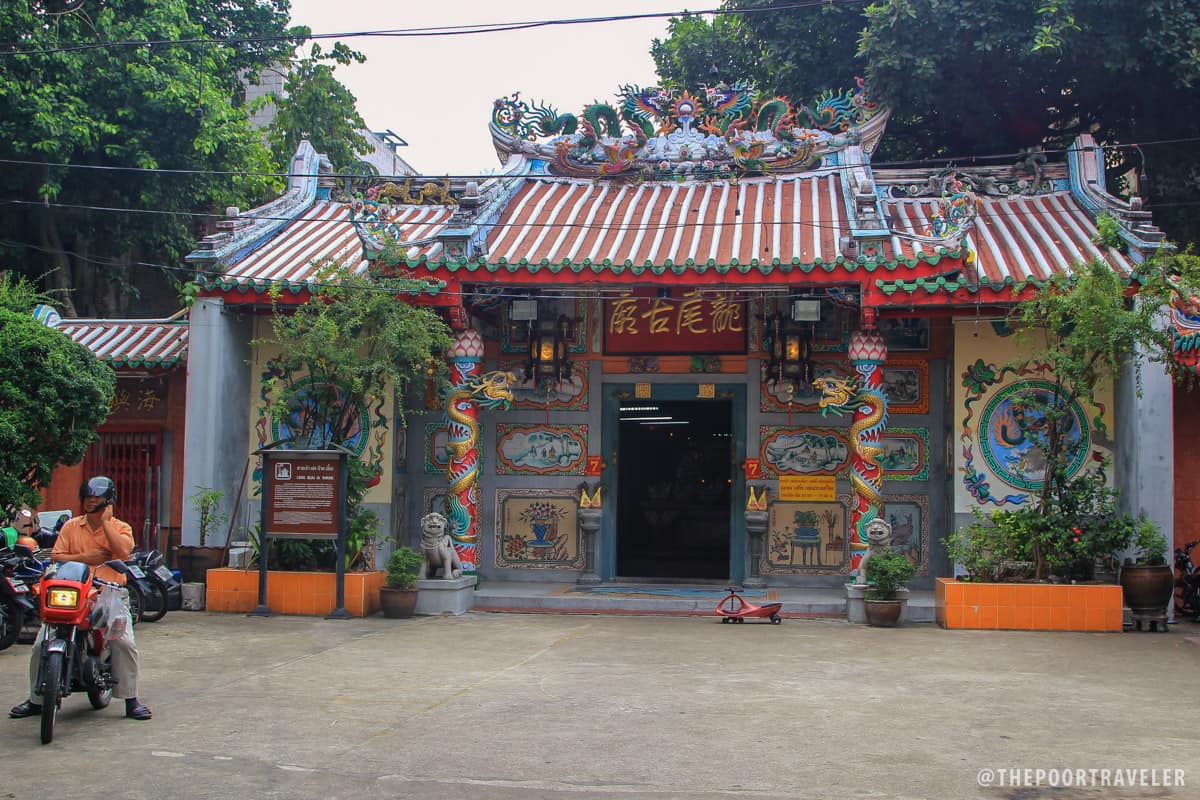
Alight at the Ratchawong Pier (N5) and make your way on foot from Ratchawong Road to Sampeng Lane and Yaowarat Road. Chinatown is popular for its shops, especially near Charoenkrung Road. But there are also temples around the district. To be honest, if you’ve been to other Chinatowns in other parts of Southeast Asia, this one might disappoint you, unless you visit during the Chinese New Year, when the district really comes to life.
(If you’re after a tummy-friendly experience, it would be best to visit after sunset.)
After spending an hour or two in Chinatown, head back to the river. You may trace your steps back to Ratchawong (N5) or go to Saphan Phut (N6) instead.
Wat Arun – The Temple of Dawn
Get off at Tha Tien Pier (N8) and take a cross river boat to the other side. You will see Wat Arun from the pier.
Located on the west bank of Chao Phraya, Wat Arun Ratcha Wararam Ratchaworamahawihan is dedicated to the second reign of the Chakkri Dynasty. Known to locals at Wat Chaeng or Temple of Dawn, it is believed that King Taksin, after escaping Ayutthaya which was attached by the Burmese, reached the place just before sunrise. He then made the place the chief temple and once housed the precious Emeral Buddha and the Phra Bang (another important image) which were moved from the Lao city of Vientiane.
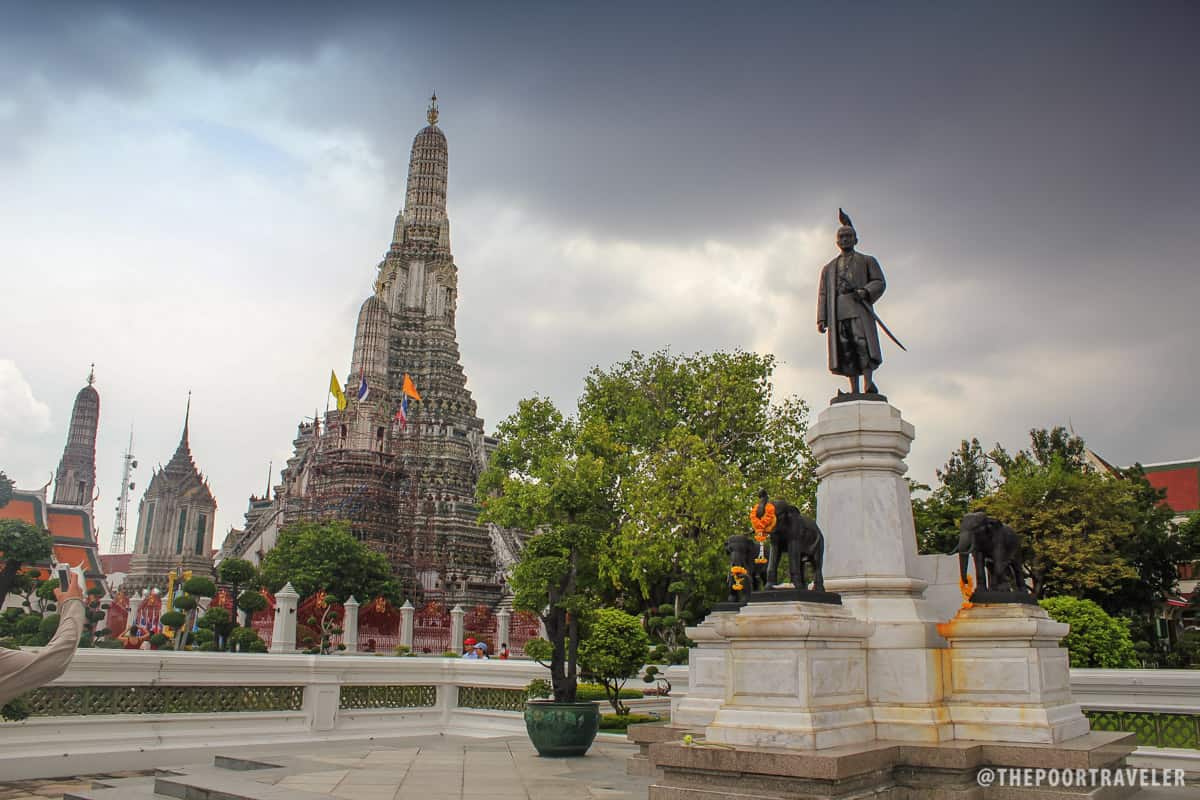
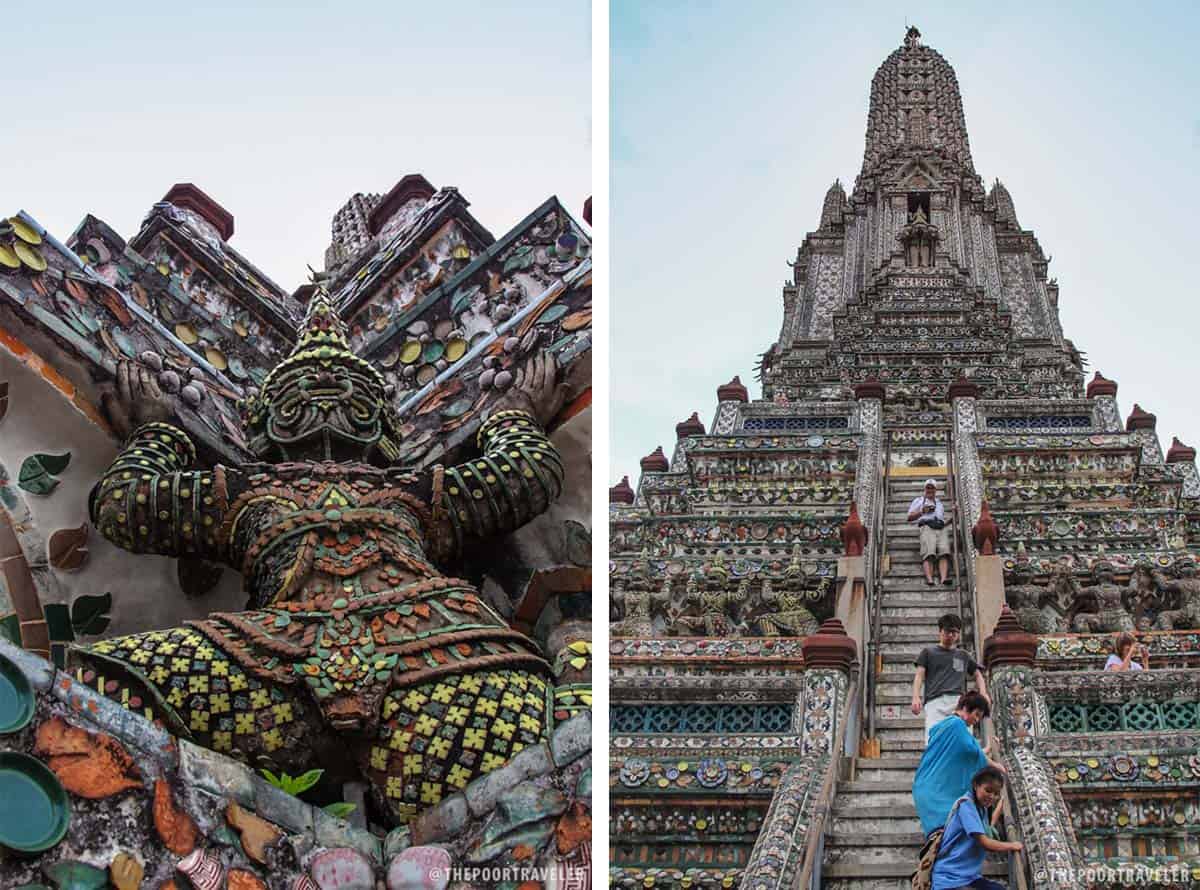
Wat Arun is probably the most recognizable landmark in Bangkok. The most captivating feature of the wat is its 70m tall spire (called prang) that towers over the Yai district and the Chao Phraya River. Even from the ferry, it is the first glorious sight if you’re coming from the Sapan Taksin BTS Station. Its intricate architecture and its picturesque location make it one of the most postcard perfect views in the city. It is best photographed at sunset when it is illuminated, a standout, shining structure at the heart of the city.
After exploring Wat Arun’s spires, head back to Tha Thien pier.
Wat Arun
Opening hours: 8:00am-6:30pm
Entrance fee: THB 50
Wat Pho – The Temple of the Reclining Buddha
Tha Thien pier (where you’re standing at this point) is in an area called Rattanakosin Island, bordered by the Chao Phraya to the west. A moat stemming from the river flows around the area, an effective defense in the olden days. The harbors some of Bangkok’s most popular wats (temples), shrines, and other crowd favorites including Wat Phra Kaew (Temple of the Emerald Buddha), Wat Mahathat, City Pillar Shrine, the Grand Palace, and Wat Pho (Temple of the Reclining Buddha).
After returning to Tha Thien pier, follow the way out (you can see it immediately) and you’ll find a street flanked with vendors. Just walk up the road and it will lead you to a temple at the corner. That’s Wat Pho.
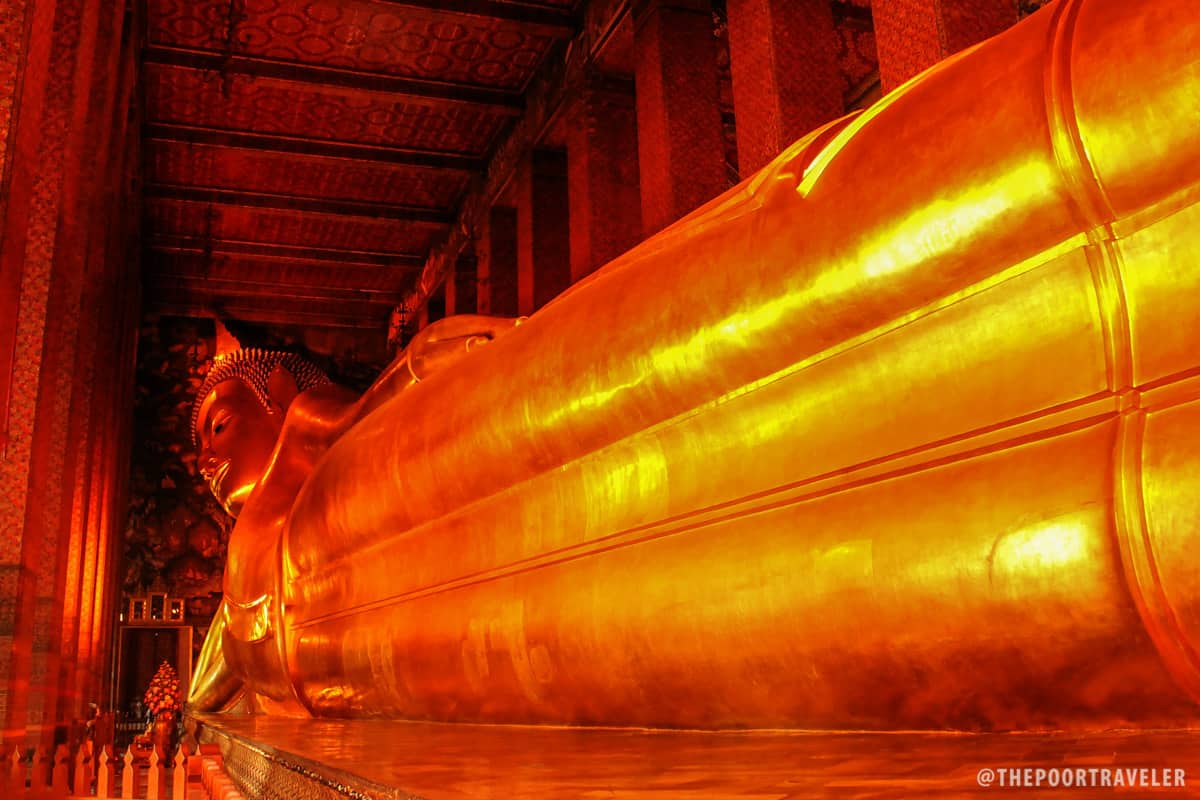
Wat Pho is famed for the enormous reclining Buddha that it shelters. The 15m high and 43m long image rests inside a well-decorated hall. I was given a small sack to put my shoes in as I was approaching the door. Despite the big crowd outside, I was delightfully surprised to see the hall almost empty. Too bad it lasted for only a minute as others flooded in immediately. While I was expecting the image to be big, I was shocked to stand before a massive, massive figure. Its highly ornate feet alone are 3m tall and 4.5 m long. (Can you picture that?) The statue itself is covered and surrounded with Buddhist and Thai symbols.
The wat is home to over 1000 images of Buddha, 91 chedis (stupas), 4 viharas (halls), and a central shrine (bot). Guarding the site are stone walls with 16 gates, “manned” by statues of Chinese giants.
One hundred and eight bronze bowls are lined up against the wall in the area behind the statue, towards the exit. These bowls symbolize the 108 auspicious characters of Buddha. Guests circumambulating the image may choose to drop a coin on every bowl for good fortune. These donations also go to the maintenance funds of the temple.
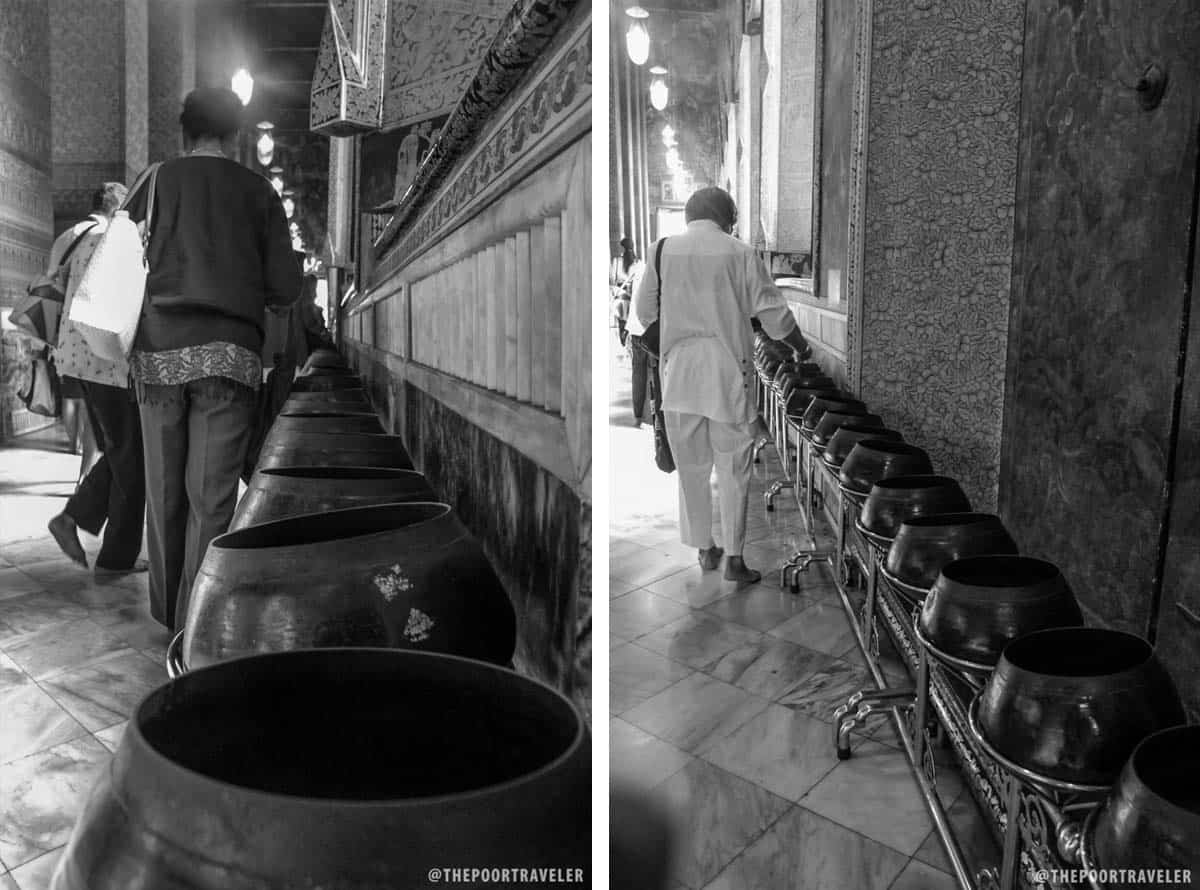
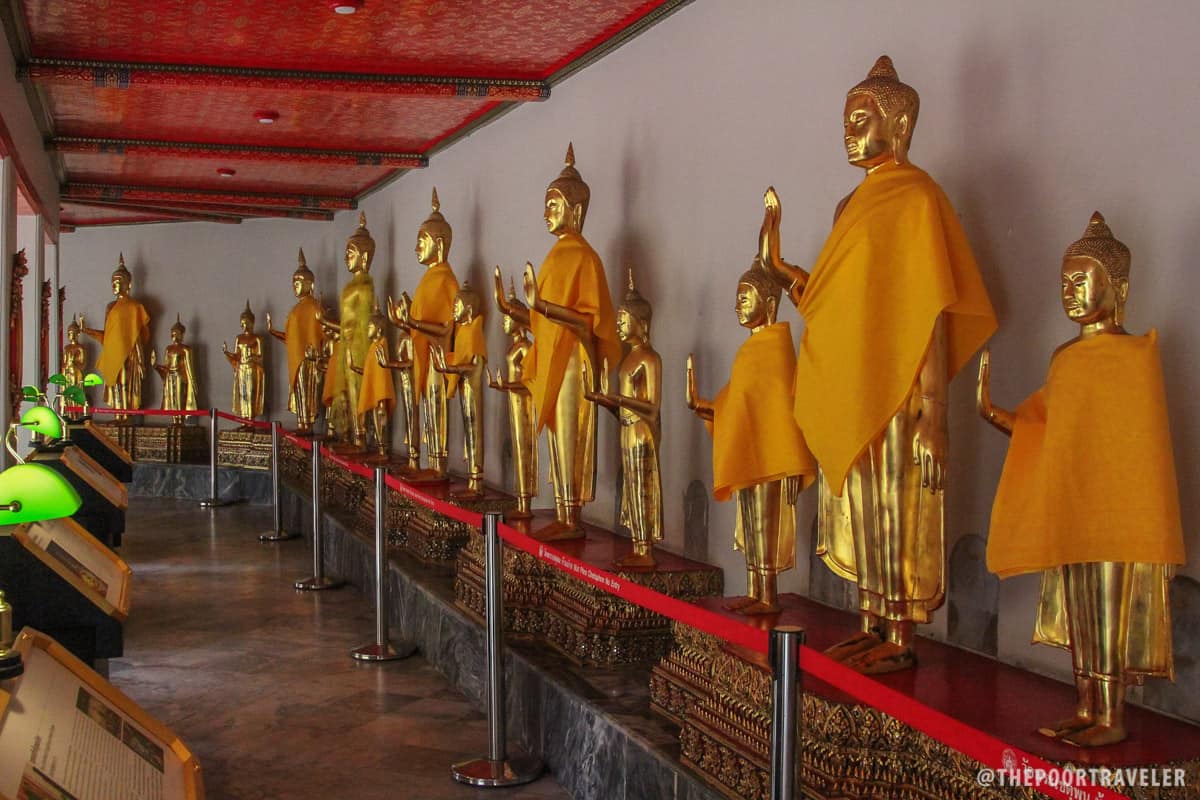
Wat Pho
Opening hours: 8:30am-6:30pm
Entrance fee: THB 100
The Grand Palace
Make your way to the corner of Maha Rat and Thai Wang Alley. You have been to this corner as this is where the road from the pier meets the road adjacent to the temple. If you’re facing the pier side, walk down Maha Rat Road to your right. It should lead you to the entrance to the Grand Palace. You know you’re on the right track if you see a lot of stores selling souvenirs along the way.
To your left you will see an alley leading to another pier, Tha Chang (N9). This street is crowded with several stores and restaurants. You may choose to grab a meal here and discover the gourmet quality of Bangkok’s kerbside cuisine.
Once done, walk to the opposite direction to the entrance of the Grand Palace.
The Grand Palace is vast. It is not a singular building but a complex of structures, pavilions, and courtyards. The Temple of the Emerald Buddha is one of the many quarters of the palace. Other notable sites inside are the Phra Maha Monthien Buildings, the Chakri Maha Prasat Buildings, and the Phra Maha Prasat Buildings. There are plenty of signs so just follow them.
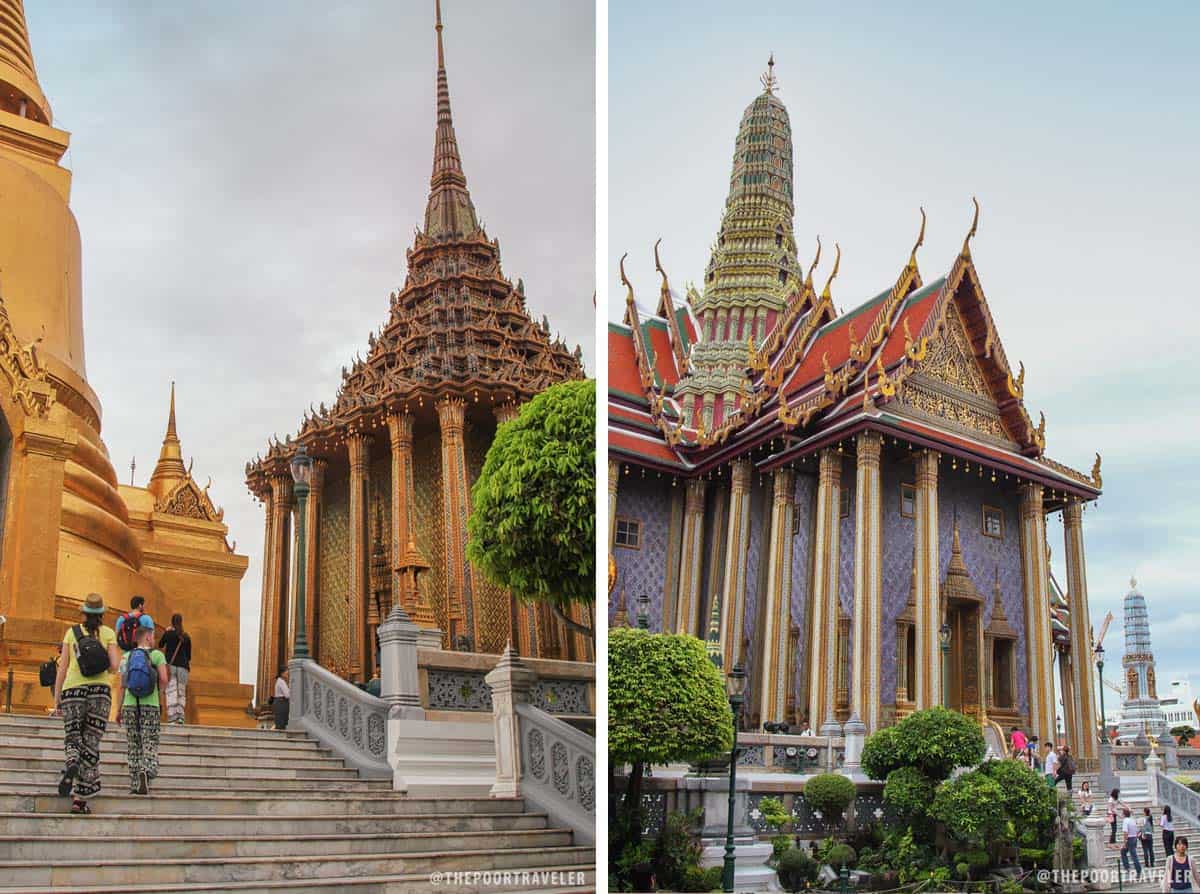
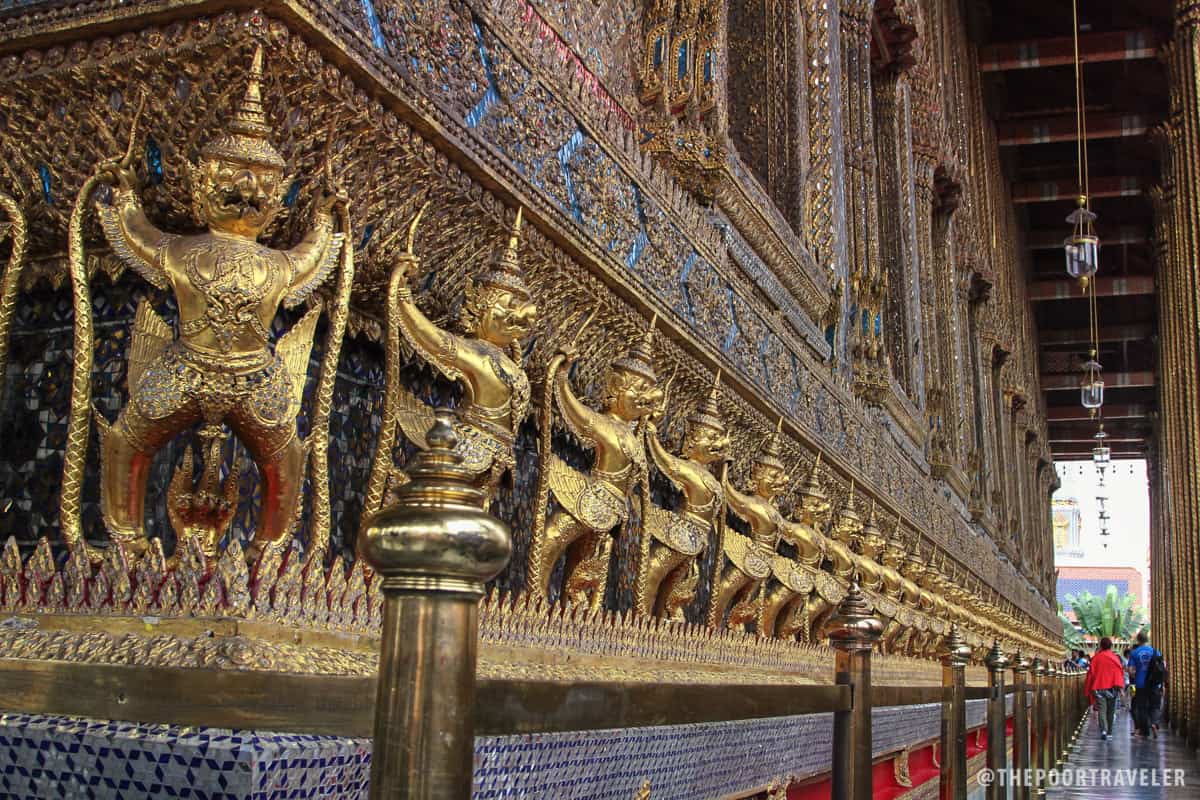
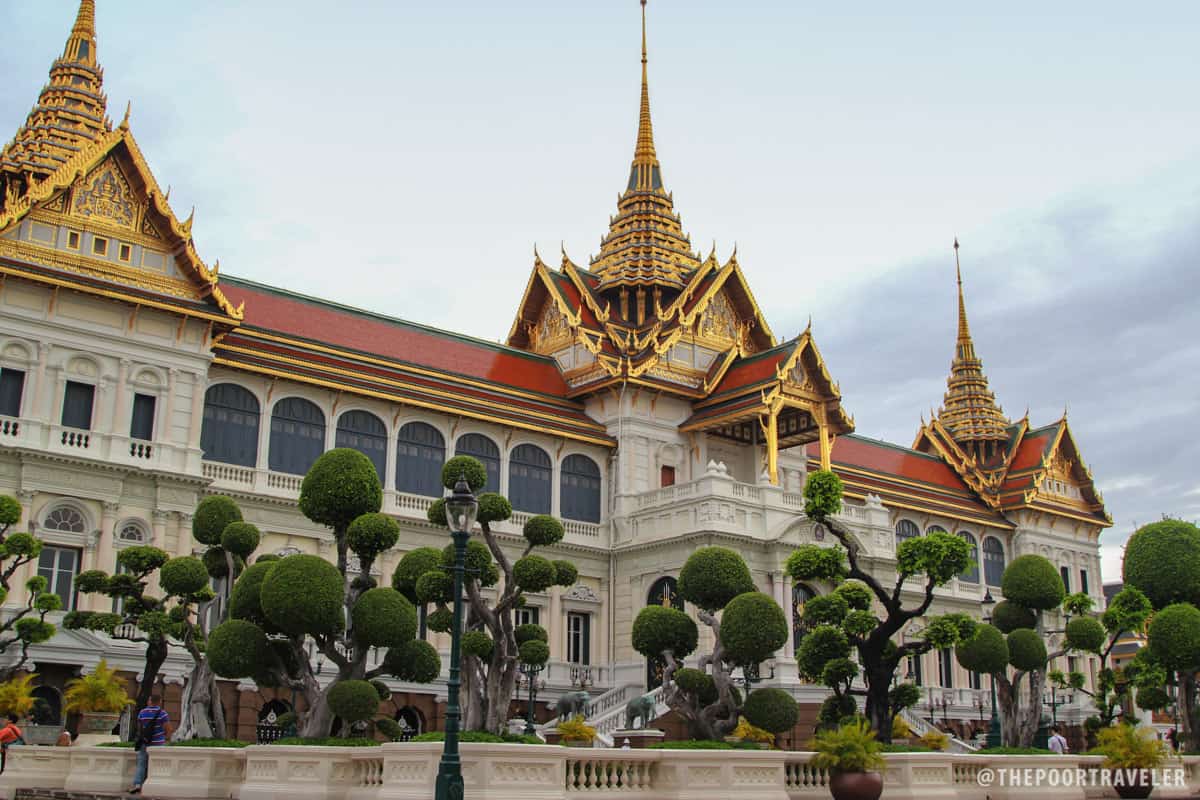
Since its construction in 1782, it has been where the King of Thailand resides. However, King Bhumibol Adulyadej (Rama IX), the current king, stays at Chitralada Palace.
After you’ve had enough of the grandeur of the palace, time to move on and walk back to Tha Chang (N9) pier.
Grand Palace
Opening hours: 8:30am-3:30pm
Entrance fee: THB 500
Siriraj Forensic Museum
Once at Tha Chang Pier, hop onto the ferry to Siriraj Pier (N10) or Tha Rot Fai Pier, both on the west side of the river. Walk a couple of blocks into the hospital complex. Follow the signs to Adulyadej Vikrom Building. The museum is on the second floor. It is quite hard to find and the area can get crowded especially during rush hour, but once you reach the hospital complex, just ask anyone who looks like they work or study there. Tell them you’re looking for the forensic museum and they’ll know.
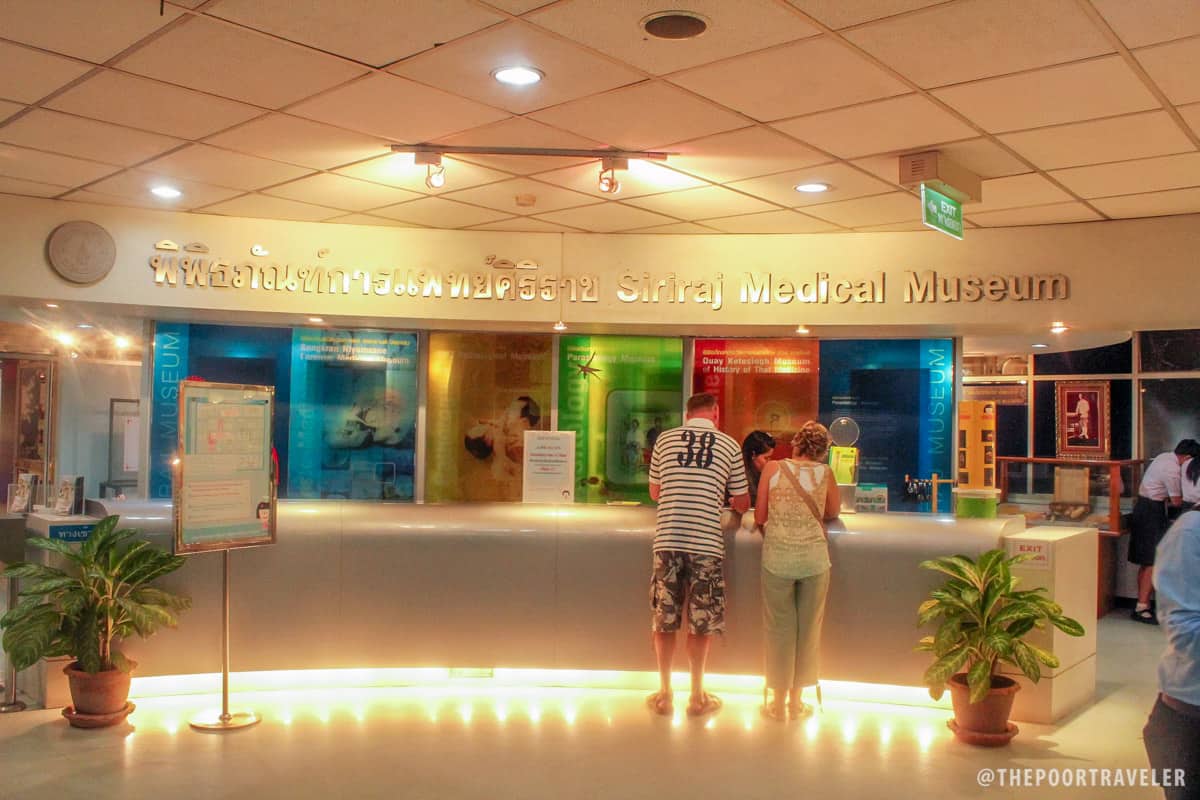
Also known as the Museum of Death, the Siriraj Medical Museum is a paradise for those into dark tourism. Operated by Siriraj Hospital, the first Western medical center in Thailand, it houses a huge collection of artifacts gathered in the 120 years of the hospital’s existence and service as a pioneer in the medical field in the country. These artifacts are showcased in six separate permanent exhibits inside the museum.
One of the most notable “items” on display in the Forensic Pathology section is the mummified body of Si Ouey Sae Urng (Si Quey). Regarded by many as modern Thailand’s first serial killer, Si Quey was a cannibal who victimized children in the 1950s. He was executed and his remains have since been kept at the hospital.
After your visit, trace your steps back to the pier and board the boat to Phra Arthit (N13).
Siriraj Medical Museum
Opening hours: Monday-Saturday 9am-4pm
Entrance fee: THB 200
Khao San Road
Backpacking central is what Khao San Road is most known for. At night, the backpackers keep the street alive as they flood into the bars and restaurants that edge the road. It’s like a bigger and wilder night market. If you’re ready for dinner at this point, you’ll have a gazillion options here. Restaurants boast western and local cuisines while outside, crowds gather around stalls that offer the usual (barbeque) and the exotic (crickets).
How to start this tour: Board the SkyTrain (Silom Line) to S6 Saphan Taksin Station, take Exit 2.
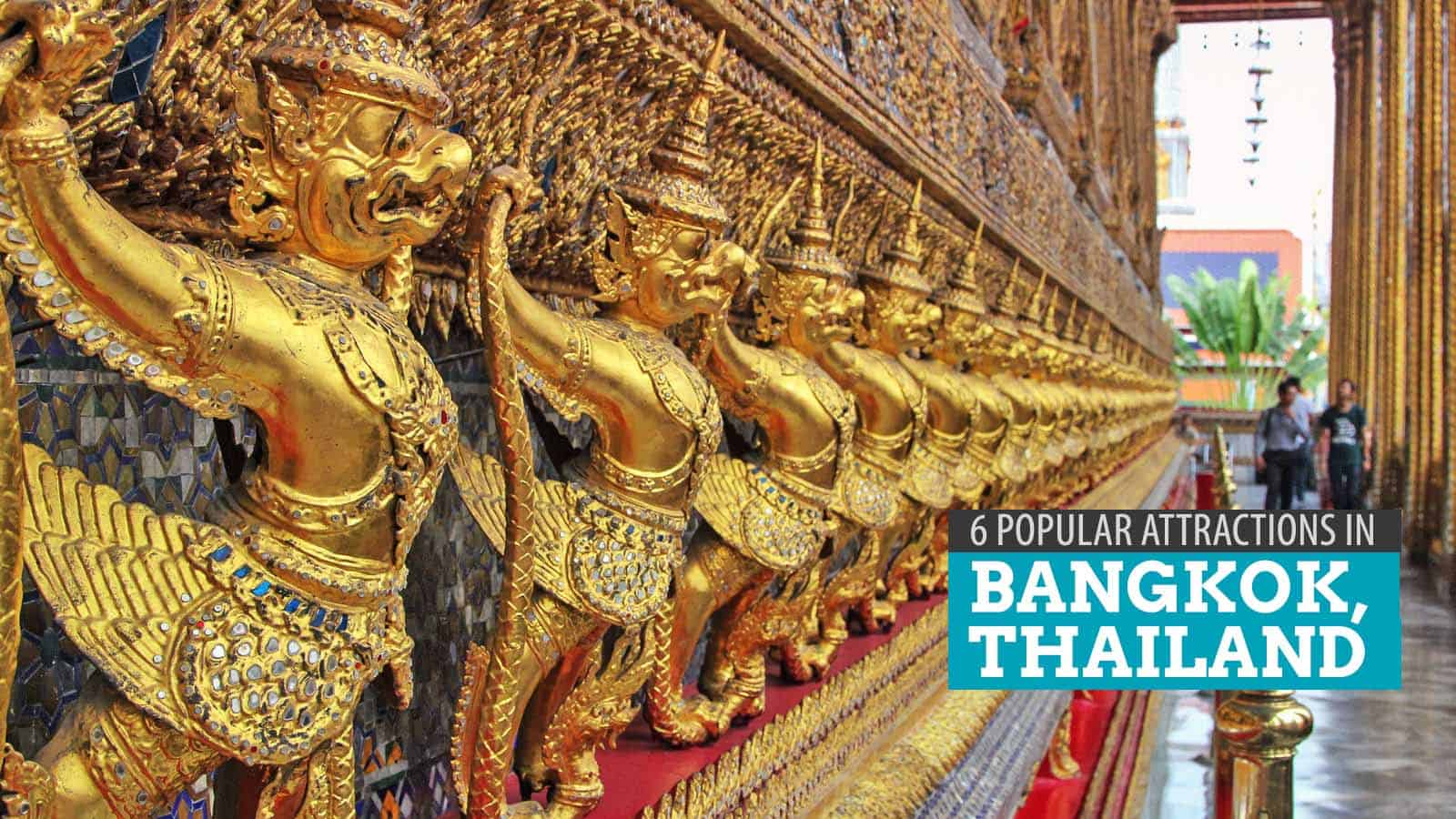



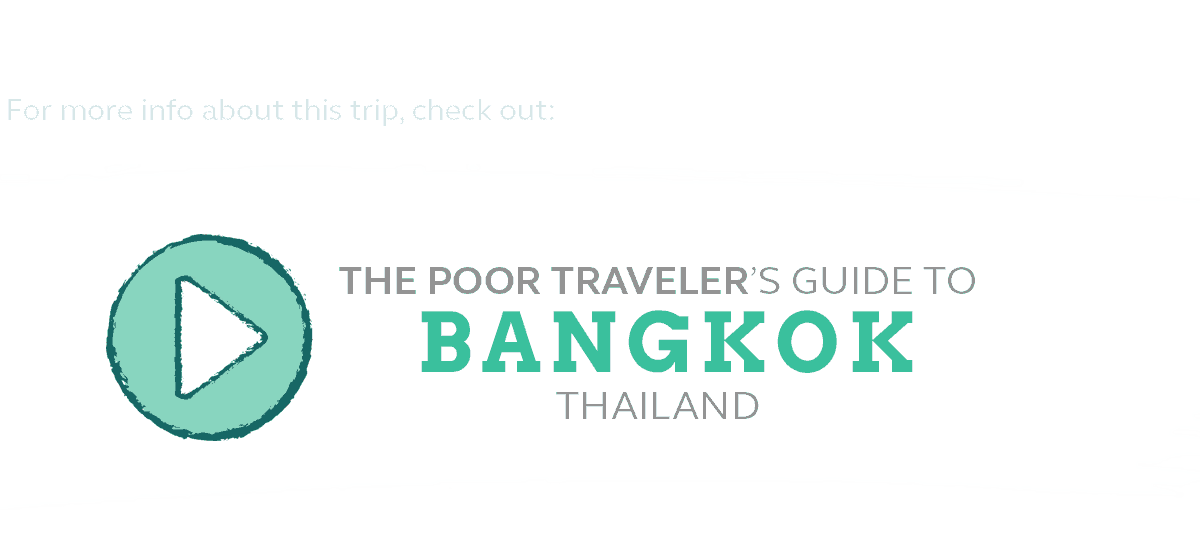




















hi, thanks for sharing your travel experiences in thailand. i will be traveling to bangkok next week and your blog gave me ideas about the tourist spots in the city. btw, if you’re using a professional camera you can adjust the shutter speed to take photos of crowded places without having the crowd register in your photos.
Hello! Thanks much for this! Can all these places be visited in one day?
Yep. That’s what I did.